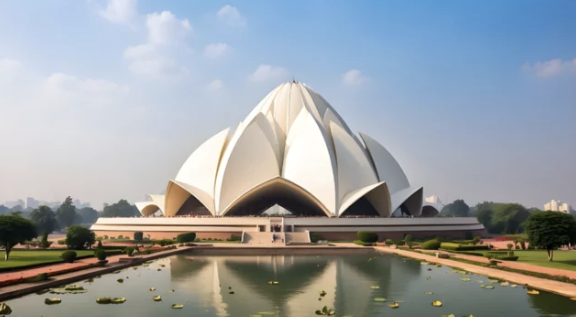Decoding the India-Middle East-Europe Economic Corridor: Strategic Benefits and Challenges




Unveiled at the September 2023 G20 summit in New Delhi, the India-Middle East-Europe Economic Corridor (IMEC) promises to reshape global trade. Heralded as "nothing less than historic," this project aims to reconnect the ancient Silk Route, disrupted by colonial partition. It's seen as a robust alternative to China's Belt Road Initiative (BRI).
The IMEC stretches across a network of rail, road, and sea connections, divided into eastern and western corridors. India links up with the Arabian Gulf in the east, while the Arabian Peninsula connects via rail to Europe, passing through Jordan and Israel in the west. Unlike the BRI, IMEC is not confined to goods transport. Plans include a secure high-speed data pipeline to boost IT exports from India, along with electricity grids and green hydrogen pipelines to foster renewable energy collaboration.
The European Union (EU) views IMEC as a chance to lower reliance on Chinese supply chains and bolster energy ties with Gulf states. Aligning with its Global Gateway investment strategy, the corridor positions Europe to diversify energy sources and solidify regional influence.
Saudi Arabia and the UAE, key players in China's BRI, find in IMEC an opportunity to enhance their global economic clout. The corridor's green hydrogen pipelines to Europe could transform these countries into future energy central hubs.
For India, which seeks expanded global market access and strengthened ties with G7 nations, IMEC is a pathway to increase trade efficiency. It offers new gateways into GCC markets and the potential to elevate India's trade in the face of existing geopolitical tensions.
IMEC heralds a strategic trade shift by promising resilient alternatives to the Suez Canal and China's BRI. It's a concerted move to enhance global supply chain resilience, integrate digital infrastructure, and spotlight eco-friendly trade technologies. The corridor's focus on renewables and green energy further underscores its commitment to leading the charge into a sustainable future.
The IMEC, announced at the G20 summit in New Delhi in 2023, heralds a strategic shift in global trade dynamics. Unlike China's Belt Road Initiative, IMEC focuses on building a high-efficiency trade network with advanced technology, green energy, and digital infrastructure. By creating a resilient alternative, it aims to reduce reliance on traditional routes like the Suez Canal and alleviates congestion while enhancing supply chain efficiency.
IMEC is not just about connecting regions; it signifies a broader reconfiguration of global trade flows. By strengthening links between India, the Middle East, and Europe, the corridor lowers logistics costs, improves trade efficiency, and boosts regional commerce by up to 40%. This marks a significant realignment, positioning IMEC as a formidable alternative to the BRI, prioritizing technological integration and ecological sustainability over mere infrastructure financing.
IMEC's transformative potential in infrastructure is evident through planned upgrades to critical ports in India such as Mumbai and Mundra. These enhancements are geared towards accommodating increased exports and will streamline cargo movement for industries like pharmaceuticals and electronics. In the Middle East, port expansion projects in the UAE and Oman will serve as vital transit points, fostering enhanced regional logistics.
Europe stands to gain from robust supply chain resilience, benefiting from alternative trade routes that decrease dependence on China. Enhanced port infrastructure will support seamless trade in high-value markets, including technology and green energy.
IMEC is poised to slash transit times and costs, speeding up commodity flows between Asia, Europe, and the Middle East by reducing reliance on the Suez Canal. It forecasts improved trade margins for perishable goods industries, cost reductions for businesses, and competitive gains for Indian exports. The corridor's construction will generate millions of jobs, stimulating growth, and regrettable materials export.
The economic ramifications of IMEC are profound, promising substantial reductions in transit times and costs. Shaving off 40% of transit time and 30% of costs compared to traditional maritime routes is no small feat. Lower logistics costs translate into reduced consumer prices and increased seller profits. The corridor is expected to significantly boost India's trade competitiveness and foster extensive job creation.
This corridor is more than a mere transportation route; it's a lifeline for industries like pharmaceuticals and chemicals, which deal with goods that have limited shelf-life. By ensuring swifter transit, these sectors can avoid spoilage risks, enhancing product quality and compliance with regulations. It's a monumental stride in not just reducing transit costs, but also in injecting competitiveness into India's import-export mechanism, potentially accelerating economic inflows.
The infrastructural backbone of IMEC includes an impressive array of developments, from ports and roads to logistics hubs. This construction frenzy isn't just about steel and concrete; it's about jobs—millions of them. Countries along this corridor are poised to witness a surge in employment, not just in construction but in providing the raw materials necessary to this vast undertaking. This sets the stage for small-scale industries to flourish, further broadening the employment horizon.
The initiative carries the promise of a more diverse, reliable global supply chain, particularly against the backdrop of crises such as those stemming from geopolitical conflicts seen in the Red Sea area. IMEC strengthens supply routes, reducing shipping premiums and enhancing route reliability, a move critical for India, which sees significant trade traverse existing maritime pathways.
This ambitious project, while rife with challenges, holds the potential for a transformative impact across continents, promoting an interconnected and sustainable global economy.
The ambitious vision behind IMEC brings with it the formidable task of managing substantial financial expenditures. The project's estimated routes carry a price tag between US $3 billion to $8 billion each, requiring innovative strategies to attract private investment and minimize risk. There's no denying the long gestation periods for capital expenditure could delay returns. Despite Saudi Arabia's US $20 billion commitment, financial institutions face hesitance due to the perceived instability of cross-border projects.
Geopolitical dynamics present significant challenges for IMEC. Central to the project is the path connecting the UAE, Saudi Arabia, and Jordan to Israel's port in Haifa. The Israel-Hamas conflict casts a long shadow over this proposition, magnifying freight costs and security concerns. Meanwhile, Egypt views IMEC as a competitor that threatens its dominance with the Suez Canal, while Turkey could perceive its pivotal role as a Eurasian bridge under threat.
The bureaucratic labyrinth of forming a legal framework for a corridor of this scale is daunting. Harmonizing the interests of several nations and establishing effective policies could create daunting delays. The administrative complexities involved in orchestrating this multinational concert represent significant potential roadblocks.
The corridor isn't just physically transformative; it aims to leapfrog digital connectivity barriers, challenging the status quo dominated by Chinese infrastructure. Through high-speed fiber optic systems, regions can expect enhanced cybersecurity, improved shipment tracking and reduced risks of operational mismanagement, further tightening the weave of international trade collaboration.
India stands to revamp its energy exports, with green hydrogen coming to the fore as a pivotal element in the IMEC construct. The corridor recognizes energy as a cornerstone, pushing for interconnected grids that champion an environmentally-conscious economic future.
The infrastructure upgrades precipitated by IMEC will likely pave the way for enhanced tourism, with airlines and cruise operators gearing up for increased traffic. The implication? A boon for industries ranging from medical tourism to hospitality, as borders become not just lines on a map but gateways for global visitors.
In conclusion, IMEC's focus on infrastructure and connectivity is poised to reshape the global trade landscape by fostering an interconnected network that is resilient, efficient, and sustainable. Its strategic infrastructure investments pave the way for a future where trade is faster, greener, and inherently more collaborative across regions.
Comments